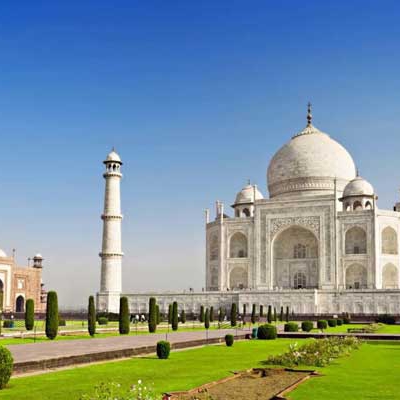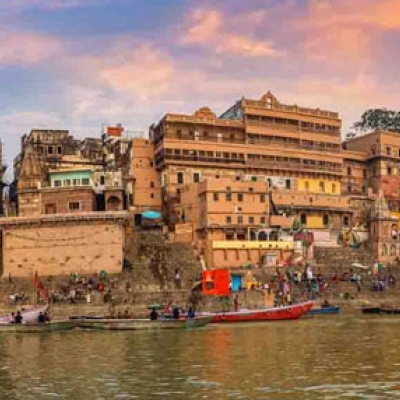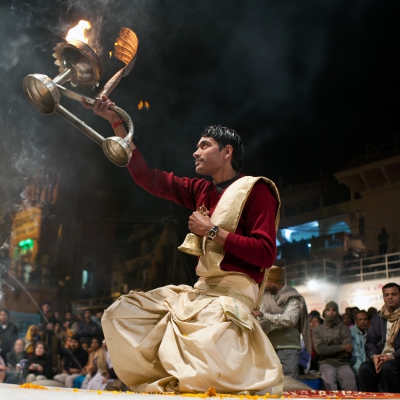Fatehpur Sikri
Fatehpur Sikri often referred to as the "City of Victory," is a historical gem that whisks you away to a bygone era. Located in the Agra district of the northern Indian state of Uttar Pradesh, this ancient historic city was strategically constructed to the southeast of an artificial lake, nestled on the gently sloping foothills of the Vindhyan hill ranges. Once serving as the capital of the esteemed Mughal Empire, Fatehpur Sikri stands as a mesmerizing amalgamation of architectural excellence and deep-seated religious devotion. Honoured for its profound cultural and historical importance, Fatehpur Sikri has earned the prestigious World Heritage status from UNESCO.
Fatehpur Sikri's historical importance is deeply etched in the annals of Indian history. It was founded by Emperor Akbar in 1569 and served as the Mughal capital for a brief but glorious period. The city was well-planned and designed to be a symbol of Akbar's vision for religious tolerance, cultural synthesis, and administrative efficiency.
One of the most striking aspects of Fatehpur Sikri is its splendid architecture and awe-inspiring history. The city is adorned with splendid structures, each a masterpiece of Mughal craftsmanship. The Buland Darwaza, or the "Gate of Magnificence," welcomes visitors with its colossal presence. The Jama Masjid, one of the largest mosques in India, is an architectural marvel adorned with intricate details. The Panch Mahal, Diwan-i-Khas, and Tomb of Salim Chishti are other remarkable structures that provide a glimpse into the architectural prowess of the Mughals. The city houses the revered Tomb of Salim Chishti, a Sufi saint, which continues to attract devotees from various faiths. The exquisite blend of Hindu and Persian architectural elements in the buildings showcases the cultural synthesis that was a hallmark of Akbar's rule.
A visit to Fatehpur Sikri is a discovery of the lasting splendour and importance of Mughal heritage woven into the rich fabric of India's history.
Major Attractions:
- Diwan-i-Khas.
- Diwan-i-Aam.
- Ibadat Khana.
- Panch Mahal.
- Tomb of Salim Chisti.
- Jama Masjid.
- Buland Darwaza.
- Birbal's House.
Climatic Condition:
Summer Season (March to June) in Fatehpur Sikri can be scorching, with temperatures soaring up to 45°C. It's advisable to avoid visiting during this period. The Monsoon season (July to September) brings relief from the scorching heat but is characterized by occasional heavy rainfall that can disrupt travel plans. Winter months from October to March are the best time to explore Fatehpur Sikri. The weather will be pleasant and comfortable, making it ideal for sightseeing and outdoor activities.
Best time to visit:
October to March.
Things to Do:
- Sightseeing.
- Pay Respect at the Sufi Shrine.
- Explore Historical Sites.
- Enjoy the Light and Sound Show.
- Shopping.
How to reach:
By Air:Agra Airport is the nearest airport to Fatehpur Sikri, situated approximately 35 Km away. Buses and cabs are easily available from the airport to Fatehpur Sikri.
By Train:Fatehpur Sikri has its own railway station, which is well-connected to Agra and other major cities in India. Buses and cabs are easily available from the railway station to Fatehpur Sikri.
By Road:You can reach Fatehpur Sikri by road through a well-maintained network of highways.
FAQ:
1.Is Fatehpur Sikri a UNESCO World Heritage Site?
Yes, Fatehpur Sikri is indeed a UNESCO World Heritage Site. It was designated as such in 1986 in recognition of its cultural and historical significance, particularly its well-preserved Mughal architecture and the historical importance of the city during the reign of Emperor Akbar.
2.What is the Historical Significance of Fatehpur Sikri?
Fatehpur Sikri served as the capital of the Mughal Empire during the reign of Emperor Akbar. It is known for its splendid architecture and rich history.
3.Is Fatehpur Sikri Worth-Visiting?
Absolutely, Fatehpur Sikri is well worth visiting. This UNESCO World Heritage Site offers a fascinating journey through history and architectural marvels, making it a must-visit destination for history enthusiasts, culture seekers, and anyone looking to explore the rich heritage of India.
4.Can We Take Photographs At Fatehpur Sikri?
Photography rules may vary within the monuments. It's advisable to check with the site authorities regarding photography restrictions.






